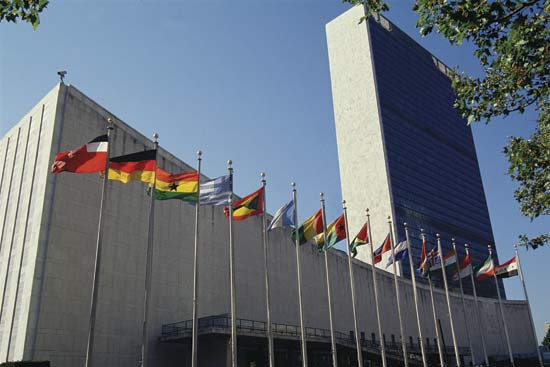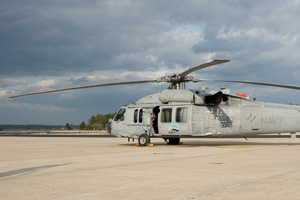
#thenewscompany :
Key Results for 2022
- Dubai-based carrier flydubai has today, 01 March 2023, announced its Annual Results for the year ending 31 December 2022
- Reports historic profit of AED 2 billion (USD 327 million); an increase of 43% compared to 2021, reflecting the carrier’s strong business model built on cost efficiency and agility
- Reports total annual revenue of AED 1 billion (USD 2.5billion) compared to AED 5.3 billion
(USD 1.4 billion) in 2021; an increase of 72%
- Carries 10.6 million passengers; an increase of 89% compared to 2021
- Takes delivery of 17 new aircraft; a record number of deliveries received in one year
- Hires 1,300 employees; the airline’s biggest recruitment drive in any year
Statements on the 2022 Annual Results
Commenting on the announcement of the airline’s record Full-Year Results for 2022, His Highness Sheikh Ahmed bin Saeed Al Maktoum, Chairman of flydubai, said:
“flydubai’s record performance for 2022 is a direct result of the carrier’s strong business model as well as its adaptability and agility during challenging times which has cemented its position as a key contributor to the success of Dubai’s aviation hub.
flydubai remained committed to maintaining the highest levels of cost and operational efficiencies while preserving and growing its workforce over the past two years. This meant the carrier was quick to cater to the pent-up demand and support Dubai’s accelerated recovery. flydubai’s second consecutive year of profitability since the start of the pandemic is testament to the exceptional contribution of its skilled team and the positive environment we operate in, which is conducive to growth and success. I look forward to seeing the vital role flydubai plays in the continued growth of the aviation sector; a key driver in realising the Dubai Economic Agenda D33.”
Ghaith Al Ghaith, Chief Executive Officer at flydubai, commenting on flydubai’s 2022 Annual Results, said:
“we realised early on the great opportunities that Dubai provides and remained focused and ready to scale up our operations once the demand for travel returned. Our resilient financial stance enabled us to maintain positive cash flows and not require the government aid that was available to us during the pandemic.2022 has been an exceptional year, with accelerated demand, bookended by the final few months of Expo 2020 and the unprecedented efforts to support travel to and from the World Cup in Doha.
Navigating through challenging times characterised by continued fluctuating fuel prices, disruption to supply chains, rising global inflation and geopolitical unrest did not dampen our strong performance last year. Our robust cost control measures, network optimisation, strong yield and the significant fuel efficiencies of our fleet of Boeing 737 MAX aircraft have contributed to this historic financial performance.
I am proud to see our network, fleet, workforce and performance reach new heights. This is all due to the unwavering vision of the leadership of Dubai and the UAE, and the hard work and dedication of everyone at flydubai.”
Cost and revenue performance
EBITDAR[1]: was reported at 28% of annual revenue.
Closing cash and cash equivalents position: including pre-delivery payments for future aircraft deliveries, is AED 4.3 billion compared to AED 3.8 billion last year.
Fuel cost:continues to be the single highest operating cost for the airline with 33.9% of total annual operating costs,due to the substantial increase in fuel prices last year. The Boeing 737 MAX aircraft will continue to bring greater fuel efficiency to our growing fleet.
Financing:during 2022, flydubai secured financing for 20 Boeing 737 MAX aircraft and 3 LEAP-1B engines through a combination of sale and leaseback and commercial debt financing.
Operational performance
Network expansion:flydubai launched16routes and ended the year with a network of 114;reaffirming itscommitment to strengthening direct airlinks from underserved markets in the region with Dubai.
flydubaicarried 10.6 million passengers across its network; an increase of 89% compared to 2021. The airline continued to see increased demand on its popular seasonal summer routes: Batumi (BUS), Bodrum (BJV), Dubrovnik (DBV), Izmir (ADB), Mykonos (JMK), Santorini (JTR), Tivat (TIV) and Trabzon (TZX).
flydubai saw an increase in demand for connecting traffic, with 46% of passengers connecting to the flydubai network or through its codeshare with Emirates; compared to 34% in 2021.
Fleet size:flydubaitook delivery of 17 new aircraft, a record number ofdeliveries received in one year in the history of the airline. Growing its fleet by 25% compared to the previous year, the airline ended 2022 with 74 aircraft: 32 Next-Generation Boeing 737-800, 39 Boeing 737 MAX 8, and 3 Boeing 737 MAX 9 aircraft. Two Next-Generation Boeing 737-800 aircraft were returned to the lessors at the end of their operating lease.
To meet the surge in demand for travel and add capacity, flydubai signed an Aircraft, Crew, Maintenance and Insurance (ACMI) agreement with Smartwings for four wet leased aircraftin the last quarter of the year, which saw the carrier operate 78 aircraft across its network by the end of the year.
Maintenance and Engineering:flydubai received its CAR-145 Base Maintenance Approval from the General Civil Aviation Authority (GCAA) to perform C checks and Entry-into-Service for the airline’s Boeing 737 MAX aircraft; bringing the airline added operational and cost efficiencies. The first C check was completed in March 2022 and the first Entry-Into-Service in April 2022.
Codeshare partnership with Emirates:in November 2022, Emirates and flydubai celebrated five years of their strategic partnership which has enabled more than 11 million passengers to enjoy seamless connectivity across the joint network of 215 destinations in 98 countries.
Match Day Shuttle flights: flydubai positioned six aircraft at Dubai World Central (DWC) and operated 1,290 Match Day Shuttle flights between DWC and Doha International Airport (DIA) from 21 November until 19 December 2022. Never before has there been up to 30 daily return flights between two countries in the region; enabling more than 133,000 football fans, representing 171 nationalities, to travel conveniently during the World Cup 2022.
Recruitment:to support the growth of the airline, 1,300 employees joined flydubai in 2022; 80% of whom are cabin crew, engineers or pilots. This was the biggest recruitment drive that has ever been undertaken by flydubai in any single year. This was achieved through meticulous forward planning and was aided by the desire of top talent to relocate to Dubai and the UAE as well as their confidence in the carrier for its decisionto preserve employment during challenging times.
Key performance and operational figures
| Key performance figures for: | Reporting period for
31 December 2022 |
Reporting period for
31 December 2021 |
| Total annual revenue
|
AED 9.1 billion
(USD 2.5billion) |
AED 5.3 billion
(USD 1.4billion) |
| Total annual profit | AED 1.2billion
(USD 327 million) |
AED 841 million
(USD 229 million) |
| Total cash assets, including pre-delivery payments | AED 4.3 billion | AED 3.8 billion |
| RPKM[2] (% growth)
|
77.4% | 88.7% |
| ASKM[3] (million)
|
31,716 | 19,109 |
| Passenger numbers | 10.6 million | 5.6 million |
| Ancillary revenue
% Of revenue comprising baggage, cargo, and inflight sales |
9.0% | 11.3% |
| Fuel costs
% Of total annual operating costs |
33.9% | 21.9% |
| Fleet size | 74 | 59 |
| Average aircraft age | 4 years and 5 months | 4 years and 11 months |
| Number of flights operated | 86,843 | 48,554 |
| Total number of employees | 4,654 | 3,682 |
Outlook statement for 2023
Ghaith Al Ghaith, Chief Executive Officer at flydubai, commenting on the outlook for 2023, said:
“Dubai continues to be one of the most desirable destinations for trade and tourism with a robust and growing economy,and a thriving aviation hub serving a growing population.Despite the ever-present headwinds that impact the aviation industry,our growth trajectory remains on trackas we supportDubai’s position as a global leader in aviation.
In 2023 we will continue to invest in new technologies, expand our network and enhance our connectivity through our airline partnerships. To support the growth of the airline, we will continue our ongoing recruitment drive which will support our growing fleet and network.
We will further grow our inhouse engineering and training capabilities which will bring the airline greater efficiencies and reflect on the bottomline; a sign of the airline’s maturity.We have invested in aircraft that reduce fuel use and CO2 emissions and this year we are set to take delivery of more than 17 Boeing 737 MAX 8 aircraft. We will continue to identify areas across the business to enhance our sustainability efforts in line with the UAE’s commitment to promote sustainable practices in the aviation industry.
We remain committed to enhancing customer experience and investing in product developments which will see a comprehensive retrofit programme across our fleet of Next-Generation Boeing 737-800 aircraft and the introduction of a new cabin product on our Boeing 737 MAX aircraft.”
***
About flydubai
From its home in Dubai, flydubai has created a network of 114 destinations served by a fleet of 76 aircraft. Since commencing operations in June 2009, flydubai has been committed to removing barriers to travel, creating free flows of trade and tourism and enhancing connectivity between different cultures across its ever-expanding network.
flydubai has marked its journey with a number of milestones:
An expanding network: Created a network of 114 destinations in 50 countries across Africa, Central Asia, the Caucasus, Central and South-East Europe, the GCC and the Middle East, and the Indian Subcontinent.
Serving underserved markets: Opened more than 75 new routes that did not previously have direct air links to Dubai or were not served by a UAE national carrier from Dubai.
An efficient single fleet-type: Operates a single fleet-type of 76 Boeing 737 aircraft and includes: 30 Next-Generation Boeing 737-800, 43Boeing 737 MAX 8 and 3 Boeing 737 MAX 9 aircraft.
Enhancing connectivity: Carried more than 90 million passengers since it began operations in 2009.
[1]Earnings Before Interest, Taxes, Depreciation, Amortisation and Rent
[2]RPKM: Revenue Passenger Kilometre
[3]ASKM: Available Seat Kilometre




































